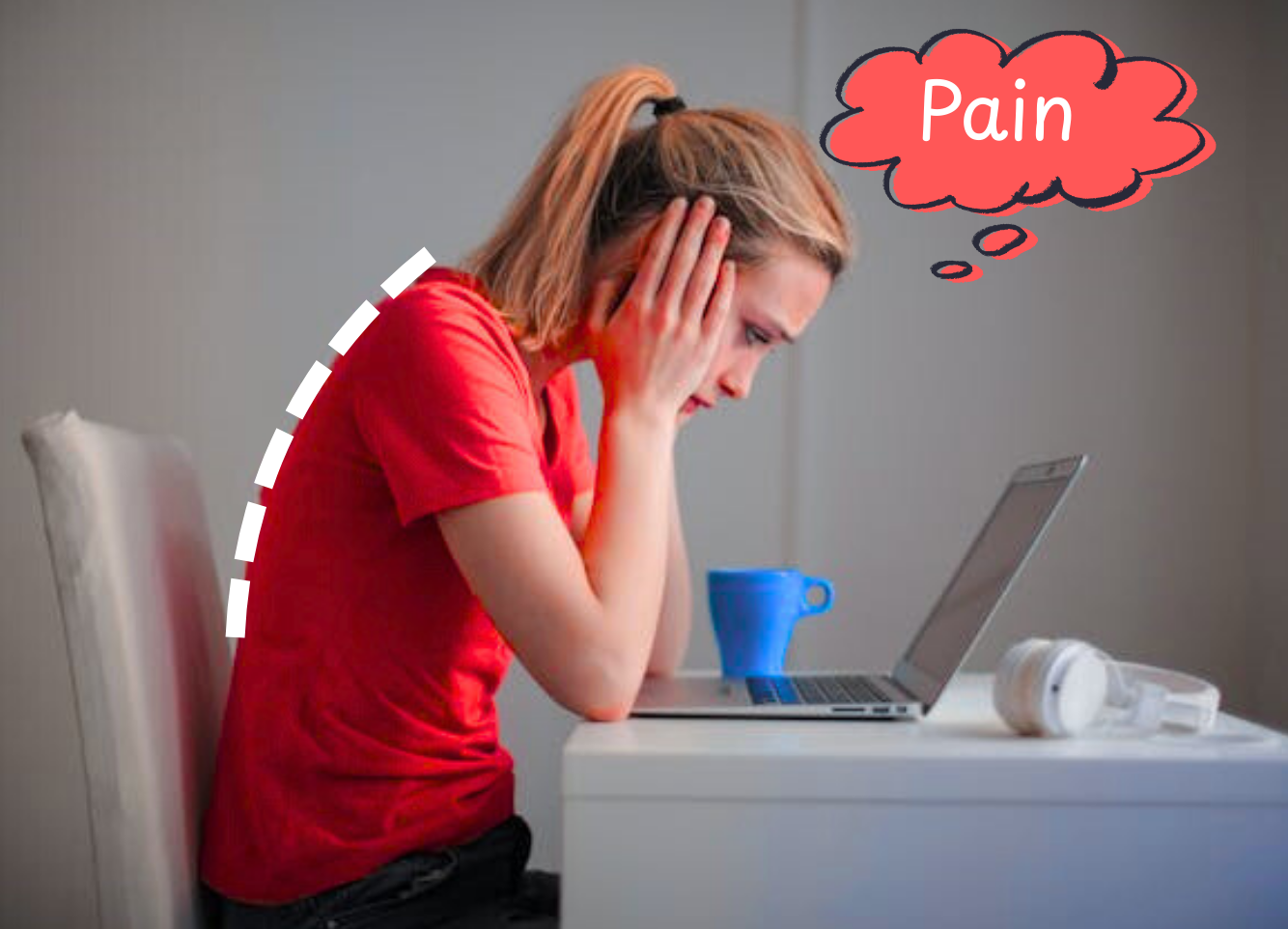 Dealing with back pain can be overwhelming, affecting every aspect of daily life, especially in a work environment where performance and wellbeing are key. It’s important to recognise that back pain isn’t one-size-fits-all—it varies in duration, intensity, and type. Whether acute, chronic, or related to conditions like sciatica, each type requires different approaches to management.
Dealing with back pain can be overwhelming, affecting every aspect of daily life, especially in a work environment where performance and wellbeing are key. It’s important to recognise that back pain isn’t one-size-fits-all—it varies in duration, intensity, and type. Whether acute, chronic, or related to conditions like sciatica, each type requires different approaches to management.
At Ergonix, we believe in a holistic approach to managing back pain that addresses both physical and mental health, ensuring that employees can perform at their best. Our tailored, evidence-based solutions aim to optimise workplace wellbeing and productivity while reducing absenteeism. Understanding the different types of back pain and their causes is the first step in making informed decisions for prevention and recovery.
Let’s dive into the specifics of acute, chronic, and sciatic back pain, offering insights on how to manage and mitigate the risks through ergonomic practices, lifestyle changes, and mental health support.
Acute Back Pain
Acute back pain strikes suddenly, often as a result of an injury or a specific incident. While sharp and intense, this pain is typically short-lived, with recovery achievable through self-care and mindful movement.
What Causes Acute Back Pain?
Common causes of acute back pain include muscle strains, ligament sprains, or soft tissue injuries, often resulting from poor posture, incorrect lifting, sudden movements, or workplace activities. For employees who spend long hours sitting or standing, workplace ergonomic solutions can help prevent the onset of these issues. Workplace ergonomics plays a crucial role in preventing and alleviating acute back pain by ensuring employees’ postures are supported throughout the workday.
Symptoms and Sensations
Acute back pain can present as sharp, stabbing pain or a deep muscle ache. Movement may feel restricted, and you might experience discomfort radiating to the buttocks or thighs.
Duration and Recovery
Acute back pain usually lasts from a few days to a few weeks, often resolving with rest and self-care. It’s important to maintain a proper ergonomic setup during recovery, which can speed up the process and prevent recurrence. For employees who spend long hours sitting, back pain prevention at work can help reduce the onset of these issues. Implementing proper ergonomics and taking regular breaks are effective strategies for minimising discomfort and enhancing workplace health.
Chronic Back Pain
Chronic back pain persists beyond three months and may have no clear cause, often developing gradually over time. This type of pain can significantly impact both physical and mental health, leading to stress, reduced productivity, and low morale at work. Ergonomic DSE assessments are key to ensuring that employees’ workstations are correctly set up to prevent back pain. Through these assessments, adjustments are made to chairs, desks, and computer setups, promoting better posture and reducing musculoskeletal strain.
Causes of Chronic Back Pain
Chronic back pain may stem from untreated acute pain or conditions such as arthritis, disc degeneration, or poor posture. Long-term sitting, repetitive movements, and improper ergonomics contribute significantly to this condition, which is why investing in workplace wellbeing programs is essential.
Symptoms and Sensations
Chronic back pain can range from a dull ache to sharp, debilitating pain, and it may fluctuate, impacting daily tasks and disrupting sleep. Mental health plays a significant role in chronic pain, with stress and anxiety exacerbating symptoms. In turn, persistent pain can increase stress and anxiety, leading to reduced concentration, productivity, and overall wellbeing. Integrating mental health support into back pain management strategies is therefore vital.
Managing Chronic Back Pain
For chronic pain, it’s essential to incorporate ongoing ergonomic adjustments, regular movement, and mental health support.
Sciatica
Sciatica refers to pain that radiates from the lower back, down through the hips, buttocks, and legs, caused by compression or irritation of the sciatic nerve.
What Causes Sciatica?
Sciatica is most often caused by a herniated disc, spinal stenosis, or bone spurs, which put pressure on the sciatic nerve. Poor posture and prolonged sitting are common risk factors, particularly in office environments.
Symptoms of Sciatica
Sciatica is typically felt as a shooting pain that travels down one leg, often accompanied by tingling, numbness, or weakness. It can be aggravated by sitting for extended periods, making ergonomic interventions in the workplace crucial.
Managing Sciatica
Ergonomic adjustments, such as the correct chair height, lumbar support, and regular movement, are essential to preventing and managing sciatica. Integrating stretching and strengthening exercises into daily routines can also help alleviate symptoms. Our wellbeing workshops offer actionable wellbeing strategies that can be easily integrated into the workday. These strategies include stretching routines, posture training, and stress management techniques to support both physical and mental health.
The Importance of Workplace Wellbeing
Chronic and acute back pain is not just a physical issue—it’s a workplace concern that can affect productivity, employee morale, and overall health. By investing in employee health and wellbeing, organisations can reduce absenteeism, improve employee engagement, and foster a thriving, sustainable workplace culture.
When to Seek Professional Support
If back pain is severe, persistent, or affecting daily activities, it’s important to seek professional help. Whether it’s a physiotherapist, occupational health specialist, or mental health professional, having the right support can make a significant difference.
At Ergonix, we offer tailored, holistic wellbeing solutions that integrate both physical and mental health approaches, including ergonomic DSE workstation assessments, wellbeing workshops, and employee educational content aimed at managing musculoskeletal and mental health concerns, helping businesses effectively support their workforce.
Self-Care and Workplace Solutions
While professional treatment is essential, self-care strategies—such as proper posture, regular breaks, and stretching—can be equally effective in managing and preventing back pain. Our wellbeing workshops provide employees with the tools they need to optimise their health, both physically and mentally.
Conclusion
Understanding the types of back pain—acute, chronic, and sciatica—along with their causes and symptoms, is the first step in creating an effective management plan. With the right support and preventative measures in place, back pain doesn’t have to impact workplace performance.
At Ergonix, we are committed to supporting your workforce’s health through DSE assessments, wellbeing workshops, and employee health and wellbeing content. Our evidence-based, holistic approach ensures employees can work comfortably and efficiently, fostering a healthier, more productive workplace culture.
Explore Our Wellbeing Hub
At Ergonix, we are dedicated to providing ongoing support for workplace health and wellbeing. In our Wellbeing Hub, we offer a range of evidence-based and actionable employee wellbeing content to help manage and understand back pain. These include:
- 10 Facts and 10 Myths About Low Back Pain
- Acute (Sudden Onset) Back Pain
- Chronic Low Back Pain
- Low Back Pain and Sciatica
- Back Pain Causes and Triggers
- Sleep Strategies for Back Bain
- Stretch routine for Back Pain
These resources are designed to educate and empower employees with practical, research-backed strategies to manage their health and wellbeing effectively. Visit our Wellbeing Hub to learn more about these valuable employee wellbeing content materials and how you can access them.
If you’re looking for tailored workplace health solutions, contact us today to discover how we can help improve your team’s wellbeing and productivity.
Book Your Consultation Now
Disclaimer: This article is intended for educational purposes only and should not be taken as professional medical advice. Please consult a qualified healthcare provider for diagnosis and treatment.







